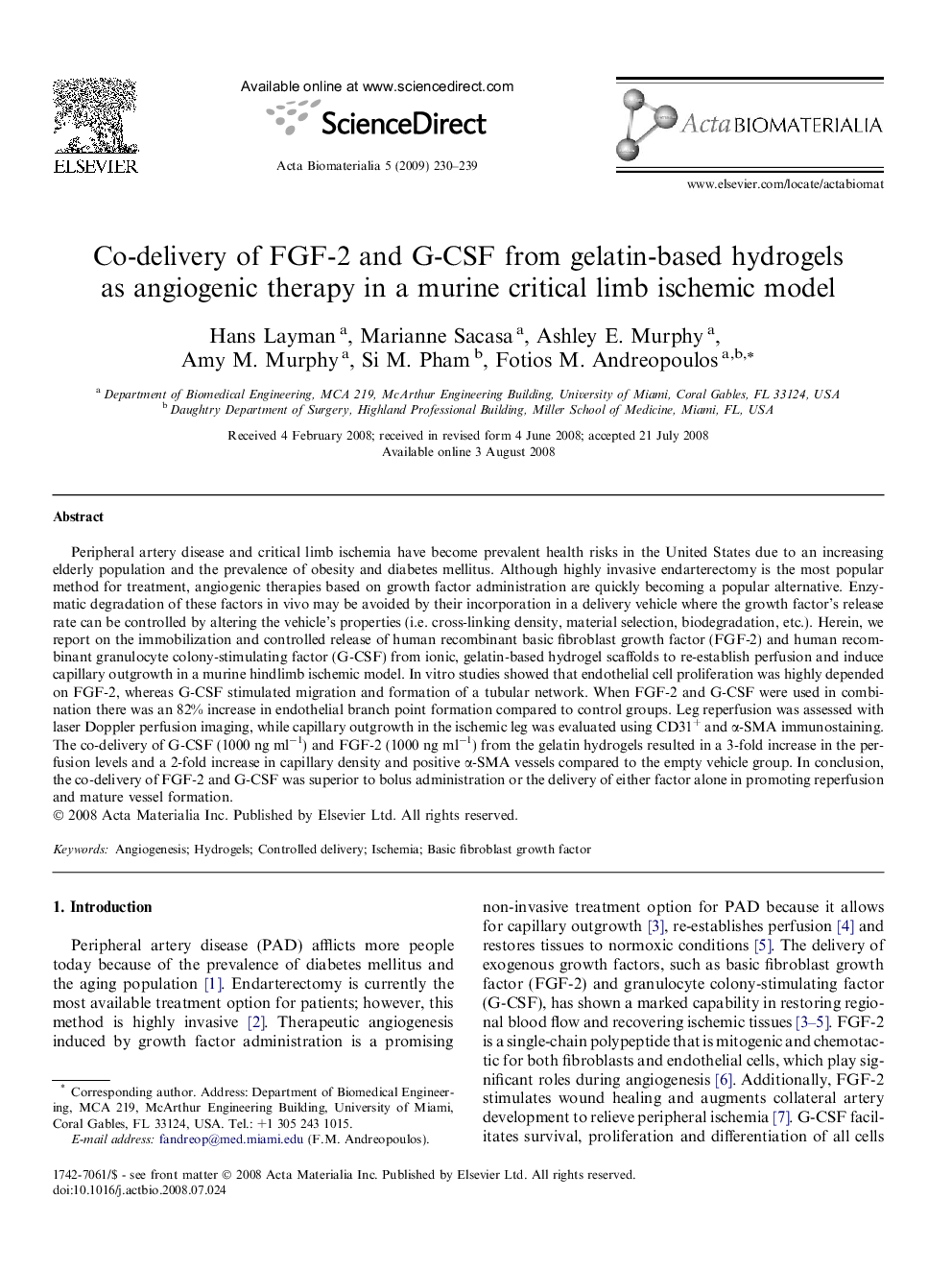| کد مقاله | کد نشریه | سال انتشار | مقاله انگلیسی | نسخه تمام متن |
|---|---|---|---|---|
| 2362 | 109 | 2009 | 10 صفحه PDF | دانلود رایگان |

Peripheral artery disease and critical limb ischemia have become prevalent health risks in the United States due to an increasing elderly population and the prevalence of obesity and diabetes mellitus. Although highly invasive endarterectomy is the most popular method for treatment, angiogenic therapies based on growth factor administration are quickly becoming a popular alternative. Enzymatic degradation of these factors in vivo may be avoided by their incorporation in a delivery vehicle where the growth factor’s release rate can be controlled by altering the vehicle’s properties (i.e. cross-linking density, material selection, biodegradation, etc.). Herein, we report on the immobilization and controlled release of human recombinant basic fibroblast growth factor (FGF-2) and human recombinant granulocyte colony-stimulating factor (G-CSF) from ionic, gelatin-based hydrogel scaffolds to re-establish perfusion and induce capillary outgrowth in a murine hindlimb ischemic model. In vitro studies showed that endothelial cell proliferation was highly depended on FGF-2, whereas G-CSF stimulated migration and formation of a tubular network. When FGF-2 and G-CSF were used in combination there was an 82% increase in endothelial branch point formation compared to control groups. Leg reperfusion was assessed with laser Doppler perfusion imaging, while capillary outgrowth in the ischemic leg was evaluated using CD31+ and α-SMA immunostaining. The co-delivery of G-CSF (1000 ng ml−1) and FGF-2 (1000 ng ml−1) from the gelatin hydrogels resulted in a 3-fold increase in the perfusion levels and a 2-fold increase in capillary density and positive α-SMA vessels compared to the empty vehicle group. In conclusion, the co-delivery of FGF-2 and G-CSF was superior to bolus administration or the delivery of either factor alone in promoting reperfusion and mature vessel formation.
Journal: Acta Biomaterialia - Volume 5, Issue 1, January 2009, Pages 230–239